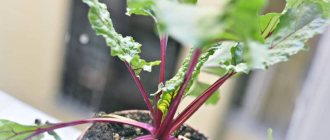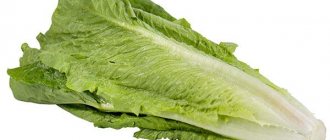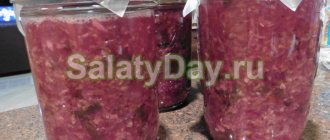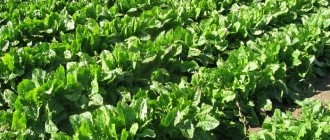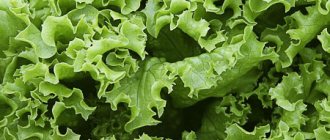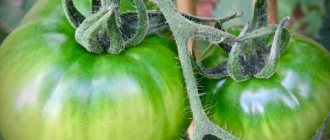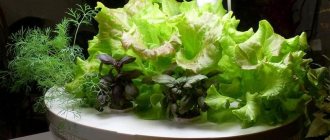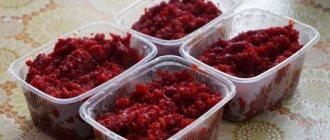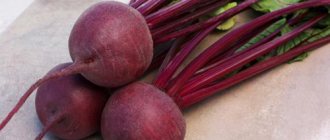Beneficial features
The first question that housewives often ask is: “Why even cook with beet tops?” Scientists gave the answer to this question a long time ago, proving that the leaves of this plant contain no less useful substances than the root vegetables. Beet tops are rich in ascorbic and folic acids, vitamins B and P, and microelements such as calcium, magnesium, potassium, and iodine. There is many times more vitamin C in the leaves than in the root vegetable.
Dishes made from this vegetable are useful for people with heart and thyroid problems, diabetes and anemia. Scientists have noted the huge content of substances that suppress the growth of cancer cells, so oncologists recommend that patients include beet tops in their diet. What to cook from this vegetable depends on a person’s culinary preferences. But the abundance of recipes allows absolutely everyone to find something to their liking.
Chemical composition of beet leaves
Important characteristics of beet tops are composition and nutritional value. The latter indicator is expressed by the presence in the structural formula of carbohydrates (6-8%), proteins (1.2-1.5%), fats (0.1%). Calorie content per 100 g is 28-40 kcal.
The Latin name for common beet is Beta vulgáris. The plant belongs to the Amaranth family. With minimal harm to young leaves, their benefits can be assessed by their rich biochemical composition, which includes the following elements:
- cellulose;
- disaccharides;
- ascorbic acid;
- amino acids;
- vitamins PP, A, U, B (including folic acid);
- bioflavonoids;
- organic acids;
- anthocyanins, which are natural antioxidants;
- betaine.
Useful mineral components were found in the composition: calcium, iron, zinc, sodium. There is chlorine, cobalt, copper, iodine, potassium. Molybdenum, boron, aluminum, and fluorine are present.
Beneficial features
Beet leaves included in the diet and therapeutic complex have a whole range of beneficial effects on the body:
help eliminate depression; strengthen capillaries; activate brain activity; stabilize the functions of the nervous system; slow down the aging process; normalize metabolic processes; increase immunity; allow you to cope with diseases of the cardiovascular system; improve vision; contribute to the restoration of vascular elasticity; activate digestion; eliminate migraine; normalize blood clotting; strengthen the skeletal system, having a beneficial effect on teeth and cartilage; participate in redox activity, important for fat metabolism; improve sexual activity of men; regulate the hormonal levels of women during menstruation and menopause; prevent an increase in cholesterol concentrations.
Due to its weak laxative effect and the presence of fiber, the tops are used to treat constipation, remove toxic compounds and cleanse the intestines of waste deposits. Folic acid helps normalize pregnancy.
Beet leaves are used to treat atherosclerosis, hypertension, and colds. They prevent osteoporosis, and also reduce the risk of developing malignant neoplasms, improve the condition of diabetes, treat gastrointestinal diseases, and stabilize the functioning of the endocrine system. When used externally, they help cure mastitis, eliminate calluses, and heal cracks.
Contraindications
When using beet tops, it is important to take into account that there are the following contraindications for its use:
- individual intolerance;
- irritable bowel syndrome accompanied by diarrhea;
- kidney diseases;
- hepatitis;
- haemorrhoids;
- hypotension.
Beet tops can cause harm with the development of inflammatory foci in the intestines, bladder or liver, with gout, heartburn, stomach ulcers, gastritis, and the presence of stones.
Role in world cooking
In many countries around the world, dishes are prepared from juicy beet leaves. In Russia they cook borscht from it, in America they prepare stew, Georgians love pkhali, and Armenians wrap the filling of meat and cereals in beet leaves, like cabbage rolls. Beet tops, the recipes for which have been passed down from generation to generation, are famous in almost all corners of the earth. Do you want to try cooking a national Russian dish or an overseas delicacy in your own kitchen? Go for it! A few simple recipes will help with this.
Video
If you are interested in the topic of the article, we suggest you look at the recommendations of an experienced housewife about drying and freezing beet tops, as well as a television story about its beneficial properties:
About the author:
Found a mistake? Select the text with the mouse and click:
Ctrl + Enter
Do you know that:
The homeland of pepper is America, but the main breeding work on developing sweet varieties was carried out, in particular, by Ferenc Horvath (Hungary) in the 20s. XX century in Europe, mainly in the Balkans. Pepper came to Russia from Bulgaria, which is why it received its usual name - “Bulgarian”.
Borsch
Let's start with borscht. To prepare it you will need half a kilo of young beets along with leaves, 4 potatoes, 2 small young zucchini, 3 ripe tomatoes, a carrot and an onion. In addition, we will prepare oil for frying and a little vinegar. And to give the dish flavor, we use seasonings. Which one is up to you to decide. Any favorite spices will do. Well, you can’t do without sour cream; it is used when serving.
This dish is lean and suitable for vegetarians and those on a diet. But it is quite acceptable to cook it with meat, and add chopped lard to the frying.
Let's start cooking by chopping the ingredients. The first thing to go into our future borscht is beets, cut into small slices. This is followed by potato cubes. While the vegetables are boiling, fry the onions, carrots, tomatoes and zucchini in oil, add a little vinegar and simmer. As soon as the vegetables become soft, transfer the frying into the pan and add the tops cut into strips there. Cook for another 15 minutes, add spices and salt. And when the borscht is cooked, it needs to steep - for this it is best to wrap the pan with a towel and leave it on the stove turned off for at least 30 minutes.
Do you like it spicy? Feel free to add pepper and crushed garlic to the borscht!
Recipes for preparing preparations for the winter
Today there are many options for using beet tops. Gardeners often eat fresh greens in salads and add them to soups. An equally common method is drying leaves and freezing them. To preserve the qualities of the plant in winter, use:
- pickling;
- pickling;
- canning.
When choosing a cooking recipe, it should be taken into account that heat exposure reduces the value of the product. At the same time, hot preservation methods provide beet tops with the longest possible storage.
Dressing for borscht
It is not difficult to prepare a dressing for borscht, and in the future its use significantly saves the cooking time of the soup. The preparation can be used not only as an ingredient in a dish, but also as a regular salad.
See also
Recipes for preparing zucchini and squash for the winterRead
The recipe involves the use of the following components:
- beets - 1 kilogram;
- water - 200 milliliters;
- tops - 500 grams;
- onions, heads - 1 kilogram;
- carrots - 1 kilogram;
- tomatoes - 1 kilogram;
- salt - 1.5 tablespoons;
- sugar - 1 tablespoon;
- vinegar 70% - ½ teaspoon.
The sugar and salt content in the recipe should be adjusted, since beets and tomatoes can have different sweetness and differ in their acid content. The type and shape of cutting vegetables is chosen depending on one’s own preferences; in most cases, the shape of slices or cubes is chosen.
First, pour a little sunflower oil into the pan, fry the carrots and onions until the vegetables become soft. After this, add beets, add water and simmer for 15 minutes. Add tomatoes and sugar and keep in simmer mode for another 10 minutes. Add salt and vinegar and mix the mixture thoroughly, keeping it on the fire until the beets are ready. Lastly, add the tops, leaving to simmer for 5 minutes. After boiling, the mixture is placed in sterilized jars.
Canned red beet tops
Beet leaves, for further use in borscht, can be prepared in just a few minutes, which is why the method is called “five-minute”. The leaves are cut, placed tightly in jars and filled with hot salty solution.
Salt and sugar are used to taste; the standard proportion is when 2 to 1 proportions are used per 1 liter of water and vinegar is added in the amount of ½ teaspoon. Canning involves sterilizing jars for 5 minutes. Vinegar is added to containers immediately before closing them.
Pickled leaves, petioles
You can pickle leaves and cuttings of beets. Since the structure of the parts of the plant is different, different processing of raw materials is assumed. For a recipe for 1 jar of 0.5 liters you will need:
- petioles 250 grams or 200 grams of beet leaves;
- salt - 1 teaspoon;
- sugar - 0.5 teaspoons;
- garlic - 1 clove;
- horseradish - 2 centimeters;
- allspice, black pepper - 5 and 10 pieces each;
- vinegar 70% - 1 milliliter.
The petioles are prepared using the triple-pouring method, that is, the hot marinade is poured, drained, boiled and re-poured 3 times. The leaves are prepared by sterilization, that is, the hot marinade is poured into jars and containers and boiled in water for 5 minutes. The blanks covered with lids are turned over and wrapped in a warm blanket.
Pickled
The method involves the use of tops. The recipe requires the following ingredients:
- stems - 1 kilogram;
- garlic - 1 piece;
- salt - 1 tablespoon per liter of water;
- bay leaf - 2 leaves;
- pepper - 10 peas.
The stems are doused with boiling water and placed tightly in jars, garlic and peppercorns cut into slices are placed between the layers, and salt is poured over the top. If you want to get the finished product in a week, then pour boiling water over the workpiece, keep it at room temperature for 2 days and put it in the refrigerator. If you fill it with cold water and put it in a cold cellar, the result is achieved after 3 weeks.
In Armenian
Beet tops prepared in Armenian style are called “borani”. Prepared from the following products:
- beet tops - 1 large bunch;
- onion - 1 head;
- garlic - 1 clove;
- salt, herbs, sour cream are added to taste;
- butter.
Finely chopped onions are sautéed in oil to achieve a golden hue. After this, add chopped tops and simmer under a closed lid for 15 minutes, add salt and pepper, during the process you need to periodically stir the mixture. Prepare the sauce by mixing chopped garlic with sour cream and thoroughly whisking with herbs. The dish is served simultaneously with the dressing.
See also
How many days can you eat pickled cucumbers after cooking? Read
Pickling
Salting allows you to preserve the tops with the maximum content of nutrients and vitamins. To do this, green leaves are cut and placed in dense layers of 2 centimeters in transparent containers, alternating with salt. The recipe requires coarse grinding without iodine content . If the tops are too rough and hard, then first pour boiling water over them and wait until they dry.
The preparation for storage is put into the refrigerator and used directly when preparing the dish. To eliminate the risk of increased salt content in the finished dish, it is recommended to first add the dressing, and only then, if necessary, add additional salt.
Freezing
An excellent alternative to traditional dressings is the freezing method. The advantage of this option is the minimum required time, the possibility of long-term storage and preservation of useful substances, which is associated with the absence of thermal effects. You can freeze the product in the following ways:
- in plastic bags;
- containers;
- in the form of ice cubes.
Most often, in order to preserve the product, they choose the storage option in bags, since it requires a minimum of time and allows you to quickly process large volumes of raw materials.
Before freezing, washed beet tops are doused with boiling water, which makes them softer and more pliable. After drying, the greens are placed in bags from which excess air is removed. This action will ensure better storage of the product and save space in the freezer.
Beet tops can be stored separately from other greens or you can create a combination of herbs. Good “partners” for her are parsley and dill. This storage option is ideal for preparing soup dressings, as it allows you to form portioned bags or cubes for 1 use.
Tops appetizer
You can roll up beet stalks with pepper; this combination will be a great appetizer for the table. If the tops are tender, then there is no need to treat the stems with boiling water. Tough shoots are doused with hot water or boiled for 1 minute. For the recipe you will need:
- tops - 0.6 kilograms;
- salt - 1.5 teaspoons;
- wine vinegar 6% - 60 milliliters;
- garlic - 3 cloves;
- sweet pepper - 3 pieces.
The petioles are cut into 10 centimeters in size and placed in sterilized containers with sliced peppers, adding garlic evenly. You should not compact the layers too tightly. Add salt on top. The water is heated to boiling water and carefully poured into the jar to the level of the hanger. Add vinegar and sterilize for 10 minutes, then cover with lids and leave to cool.
Pie with beet tops
The birthplace of this recipe is Karachay-Cherkessia. To prepare the pie we will need the following products:
- flour - 200 g;
- homemade soft cheese (brynza, suluguni) - 170 g;
- onion feathers;
- beet tops - a bunch;
- salt.
Wash the raw leaves and cut them into smaller pieces, add cheese and onion to them, mix thoroughly. Knead a loose dough from flour, salt and water. Roll out several circles according to the size of the pan. Now we form the pies: put a layer of dough on a greased frying pan and distribute the filling on top. We will bake it in the oven. Pie with beet tops is served to the table, cut into pieces.
Georgian pkhali
This is a type of beetroot cutlet, well suited for dietary nutrition.
You will need:
- 3-4 pcs. – beets
- A small bunch of tops, dill, cilantro
- 4-5 pcs. – a clove of garlic
- 1 cup – walnut kernels
- 1 PC. - large onion
- 1 teaspoon – khmeli-suneli seasonings
- A pinch of salt and pepper
How to cook:
1. Boil the beets in advance until tender, let them cool.
2. Now you can peel the beets, grate them on a fine grater, and squeeze out the juice well.
3. In a blender, grind all the greens, nut kernels, garlic, and onions until smooth.
4. Combine the resulting mass with grated beets, add all the spices, salt, and mix. Place the beet mass in the refrigerator for 2 hours.
5. With wet hands we form balls from the resulting “dough” and place them beautifully on a plate.
Calorie content per 100 g. – 104 kcal
Bon appetit!
Stew
A very popular product for preparing vegetable stew is beet tops. Recipes for this dish are complemented by ingredients such as: potatoes, peppers, legumes, spinach, carrots, cauliflower and much more. Let's try to cook stew using one of the most common methods. To do this, take a large bunch of tops, an onion, several ripe bell peppers (preferably multi-colored ones), oil, herbs and seasonings. Now fry the chopped vegetables separately, put them in a saucepan and simmer for about 20 minutes.
Before serving, season with garlic and seasonings.
Composition and calorie content
Beet tops appear in our beds even before cabbage and other vegetables grow on them. At the same time, it can easily replace all these crops and significantly enrich the daily diet with healthy vitamin dishes.
The leaf of the young tops is characterized by a rich green color with burgundy-purple veins and petioles; it has an appetizing appearance and exceptional taste characteristics.
The tops contain vitamins necessary for the human body, as well as macro- and microelements. This greenery contains a high content of minerals such as Ca, Al, Na, Mg, Cu, D. Its leaves contain a lot of sulfur, phosphorus and iodine, which is so necessary for all residents of large cities.
In terms of the content of the set of vitamins, the tops can even be compared with the most expensive vitamin complexes. In addition to ascorbic acid and carotene, there are all representatives of type B vitamins, as well as niacin and vitamin U, and the red-violet parts of the tops contain high concentrations of natural antioxidants, anthocyanins.
It is very important that beet greens have a reduced calorie content. 100 g of greens contains only 28 kilocalories, with protein accounting for 1.2%, fat – 0.1% and carbohydrates – 6%. Tops are considered an excellent source of plant fiber, as well as organic acids and monosaccharides
Tops are considered an excellent source of plant fiber, as well as organic acids and monosaccharides.
Vegetarian cutlets
Such a dish can please not only those who observe strict fasting or do not eat meat due to some other beliefs. Cutlets made from beet tops can be a wonderful... side dish! They go well with smoked bacon and lard, fried sausages, salted lard, and ham. You can serve them as an independent dish, for example, with sauce or adjika. This dish turns out to be very juicy and aromatic; you can’t immediately tell that it is based on beet tops. What to prepare for the cutlets and how to serve them is up to you. So let's get started.
Wash the beet leaves (a large bunch) and cut them into smaller pieces. Beat in a raw egg and sprinkle with flour. The amount of flour and eggs depends on the juiciness of the greens and their quantity. The result should be a dense mass that allows you to form cutlets. You need to fry them in hot oil.
Soup
This vegetable is often used to prepare first courses. Let's try, for example, to prepare soup with beet tops. To do this, cook a light chicken broth, add finely chopped potatoes, grated carrots and fried onions in oil. When the vegetables are cooked, add the tops, cut into thin long strips, into the broth. Boiled eggs are also very suitable for this recipe; quail eggs look especially impressive in plates. You can serve this soup with croutons or croutons.
Stewed beet tops
- I chop one large onion into thin half rings.
- I pass two cloves of garlic through a press.
- Heat a little vegetable oil in a frying pan and sauté the onion until golden brown. Then I add garlic to it.
- I wash the beet tops (30 grams), but do not scald them, as in the previous recipe. I just chop it not very finely and add it to the onions and garlic.
- Immediately add some water to the pan. Don't forget about salt and seasonings.
- Then I simmer it all under the lid until done.
- Meanwhile, I fry a handful of walnut kernels in a dry frying pan. There's a lot of sense in them.
I put the tops on a plate, sprinkle with lemon juice and sprinkle with nuts.
Vitamin salad
Recipes with beet tops do not always involve heat treatment. Salads made from fresh leaves, which contain a maximum of vitamins and beneficial microelements, are also very popular. The only exposure to high temperature is a second immersion in boiling water, which is necessary for the tops to become soft. Beet leaves in salads go well with cucumbers, radishes and radishes, cabbage, watercress, spinach, lettuce, and herbs. You can add boiled eggs, roasted nuts, olives, flaxseed or sesame seeds. Scalded raisins give such salads a completely unusual taste.
Vegetable oil seasoned with fruit vinegar, lemon or pomegranate juice is often used for dressing. Sour cream or mayonnaise are also great.
Dolma
In the East, the word “dolma” refers to any dish consisting of a vegetable base stuffed with a mixture of rice and meat. The familiar bell pepper with minced meat, cabbage rolls in grape leaves, and even eggplant boats are considered variants of dolma recipes. Of course, among all the variety, there was a place for an option with beet tops.
To prepare pkhali, young beet leaves with cut stems are used. There is no strict recipe for preparing the filling (as well as the dish as a whole). In order to make minced meat, beef, lamb, pork or poultry meat, as well as a mixture of them, is used. Be sure to add finely chopped or grated onions. In the East, it is customary to put very little rice in the filling, no more than a quarter by volume.
Dolma wrapped in leaves is pre-fried in a frying pan, baked in the oven until half-cooked, or immediately placed in a large cauldron. To prepare the gravy, you can use a mixture of fried vegetables (carrots, onions, garlic) seasoned with tomato.
Dolma is served on a large platter, along with gravy.
